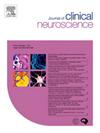Clinical outcomes of adults with intracranial grade 1 and 2 ganglioglioma
IF 1.9
4区 医学
Q3 CLINICAL NEUROLOGY
引用次数: 0
Abstract
Ganglioglioma is a rare primary brain tumour that most frequently occurs in children and young adults. They are generally low-grade and have a favourable prognosis, but there is limited literature to guide the optimal management. The aim of this study was to investigate the clinical outcomes of adults with intracranial ganglioglioma, and to determine the frequency and duration of radiological follow-up. Thirteen adult patients with CNS WHO grade 1 and 2 ganglioglioma were identified retrospectively from case records at a tertiary neurosurgical centre between 2010 and 2022. Patient characteristics, magnetic resonance imaging (MRI) features, and clinical outcomes were obtained. Surgery was classified as gross total (GTR) or subtotal (STR) resection. 84.6 % (n = 11) of patients had temporal lobe tumours, with most (69.2 %) presenting with seizures, at a median age of 29.0 years. GTR and STR were achieved in nine and five patients, respectively. No patients received adjuvant radiotherapy. During the median follow-up period of 8.9 years there was no radiological recurrence after GTR, and only one recurrence after STR at 65 months that did not require treatment. There was no patient mortality. Two patients continued to have seizures at last clinical follow-up. Low grade adult intracranial ganglioglioma has an excellent prognosis, with a recurrence rate below 10 % in this series. Long-term surveillance is not necessarily required if GTR has been achieved and patients can be considered for discharge after annual MRI for 5 years. In patients where only STR is achieved, annual MRI is required although the progression/recurrence rate remains low and asymptomatic.
求助全文
约1分钟内获得全文
求助全文
来源期刊

Journal of Clinical Neuroscience
医学-临床神经学
CiteScore
4.50
自引率
0.00%
发文量
402
审稿时长
40 days
期刊介绍:
This International journal, Journal of Clinical Neuroscience, publishes articles on clinical neurosurgery and neurology and the related neurosciences such as neuro-pathology, neuro-radiology, neuro-ophthalmology and neuro-physiology.
The journal has a broad International perspective, and emphasises the advances occurring in Asia, the Pacific Rim region, Europe and North America. The Journal acts as a focus for publication of major clinical and laboratory research, as well as publishing solicited manuscripts on specific subjects from experts, case reports and other information of interest to clinicians working in the clinical neurosciences.
 求助内容:
求助内容: 应助结果提醒方式:
应助结果提醒方式:


